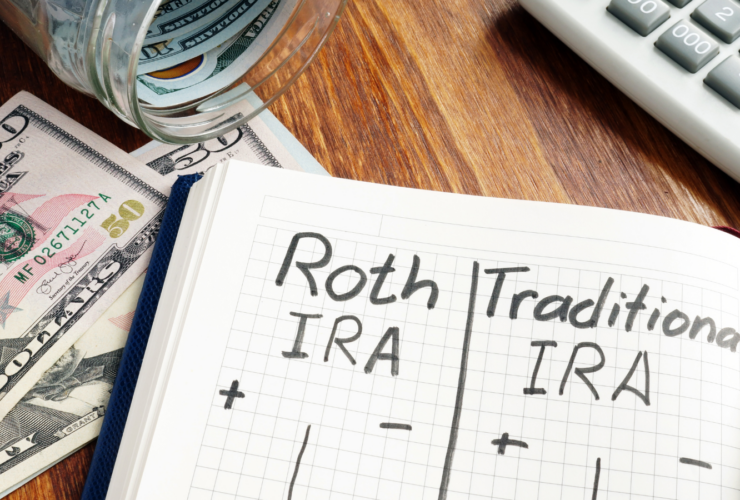Top 7 Myths About Self-Directed IRAs
Presented by Hedgehog’s strategic partner CamaPlan.
There is a lot of confusion and skepticism over self-directed IRAs and how they work. Let’s take a deep dive into self-directed IRAs and disprove the top 7 self-directed IRA myths.
1. Myth: I can only buy CDs, stocks, bonds, and mutual funds in an IRA.
Fact: IRAs Can Purchase Almost Anything.
A common misconception about IRAs is that purchasing anything other than CDs, stocks, mutual funds or annuities is illegal in an IRA, but this is false. The only prohibitions in the Internal Revenue Code for IRAs are investments in life insurance contracts and “collectibles.” Since there are so few restrictions in the law, almost anything else that can be documented can be purchased in your IRA.
A “self-directed” IRA allows any investment not expressly prohibited by law. Common investment choices include domestic and foreign real estate options, secured and unsecured notes, including first and second liens against real estate, C corporation stock, limited liability companies, limited partnerships, trusts, and more.
2. Myth: Great! I can buy anything I want in an IRA!
Fact: Caution: There Are Some Restrictions on What You Can Do With Your IRA.
While the Internal Revenue Code lists very few investment restrictions, certain transactions (as opposed to investments) are considered to be prohibited. There are severe consequences if your IRA enters into a prohibited transaction, so it is important to understand what constitutes a prohibited transaction.
Essentially, the transaction rules were made to discourage certain persons, called disqualified persons, from dealing with the income and assets of the plan in a self-dealing manner. As a result, disqualified persons are prohibited from directly or indirectly entering into or benefitting from your IRA’s investments.
Investment transactions are supposed to be on an arms-length basis. Disqualified persons to your IRA include, among others, yourself, your spouse, your parents and other lineal ascendants, your kids and other lineal descendants and their spouses, and any corporation, partnership trust or estate which is owned or controlled by any combination of these persons.
It’s essential when choosing a custodian or administrator that the company you choose is very knowledgeable in this area. Even though no self-directed IRA custodian or administrator will give you tax, legal or investment advice, the education they provide will be critical to your success as a self-directed IRA investor.
3. Myth: Roth IRAs are the only ones that can be self-directed.
Fact: Seven Types of Accounts Can Be Self-Directed, Not Just Roth IRAs.
There are seven different types of accounts that can be self-directed. They are:
- The Roth IRA
- The Traditional IRA
- The SEP IRA
- The SIMPLE IRA
- The Individual 401(k), including the Roth 401(k)
- The Coverdell Education Savings Account (ESA, formerly known as the Education IRA)
- The Health Savings Account (HSA).
Not only can all of these accounts invest in non-traditional investments, as indicated above, but they can be combined to purchase a single investment.
4. Myth: Only certain kinds of people can have self-directed accounts.
Fact: Almost Anyone Can Have a Self-Directed Account of Some Type
Although there are income limits for contributing to a Roth IRA, having a retirement plan at work does not affect your ability to contribute to a Roth IRA, and there is no age limit either.
With a Traditional IRA, the fact that you or your spouse has a retirement plan at work may affect the deductibility of your contribution, but anyone with earned income who is under age 72 can contribute to a Traditional IRA. There are no upper-income limits for contributing to a Traditional IRA. A Traditional IRA can also receive funds from a prior employer’s 401(k) or other qualified plans.
Additionally, you can contribute to a Coverdell ESA for your children or grandchildren, nieces, or nephews. You can contribute to an HSA regardless of your income level if you have a High Deductible Health Plan. With an HSA, you may deduct your contributions to the account, and qualified distributions are tax-free forever!
All of this is in addition to any retirement plan you have at your job or for your self-employed business, including a SEP IRA, a SIMPLE IRA or a qualified plan such as a 401(k) plan or a 403(b) plan.
5. Myth: You need a lot of money to have a self-directed account.
Fact: Even Small Balance Accounts Can Participate in Non-Traditional Investing.
There are at least 4 ways you can participate in real estate investment, even with a small IRA.
First, you can wholesale property. You simply put the contract in the name of your IRA instead of your name. The earnest money comes from the IRA. When you assign the contract, the assignment fee goes back into your IRA. If using a Roth IRA, a Roth 401(k), an HSA, or a Coverdell ESA, this profit can be tax-free forever as long as you take the money out as a qualified distribution.
Second, you can purchase an option on real estate, which can then be exercised, assigned to a third party, or canceled for a fee.
Third, you can purchase property in your IRA subject to existing financing or with a non-recourse loan from a bank, a hard money lender, a financial friend or a motivated seller. However, profits from debt-financed property in your IRA may incur unrelated business income tax (UBIT).
Finally, your IRA can be a partner with other IRA or non-IRA investors. For example, one recent hard money loan we funded had 10 different accounts participating. The smallest account to participate was for only $1,827.00!
6. Myth: Roth IRAs provide tax-free income only after I turn 59 ½.
Fact: An Inherited Roth IRA Can Give You Tax-Free Income Now No Matter What Your Age.
Many people know that a qualified distribution from a Roth IRA is tax-free. To make the distribution qualify as tax-free, it must be distributed after the IRA owner has had a Roth IRA for at least 5 tax years and after one of four events occurs:
- The IRA owner is over age 59 1⁄2
- The IRA owner becomes disabled
- The IRA owner dies and the distribution is to his or her beneficiary
- The distribution is for a first-time home purchase, either for the IRA owner or certain close family members.
Although neither the original Roth IRA owner nor his or her spouse has to take a distribution (assuming the spouse elects to treat the IRA as their own), non-spouse beneficiaries of a Roth IRA do have to take distributions, normally over their expected lifetimes.
However, once the five-year test is met, those distributions are tax-free, regardless of the age of the IRA beneficiary! Even a $100,000 Roth IRA left to a 6 year old beneficiary may generate as much as $80,496,367 in lifetime tax free distributions if the IRA can sustain a yield of 12%, which is very possible with a self-directed IRA.
7. Myth: Uncle Sam discourages tax-free investing.
Fact: 2010 Brings an Incredible Gift From Your Government.
Many people have not been able to qualify for this incredible wealth-building tool because of income limitations that restrict a person’s eligibility to contribute to a Roth IRA or convert
pre-tax accounts like Traditional IRAs into a Roth IRA.
In 2010, the rules for conversions changed so that anyone, regardless of income level, would be eligible to do a Roth conversion. Beginning in 2010, anyone who has a Traditional IRA (including a SEP IRA), a SIMPLE IRA which has been in existence for at least two years, or a former employer retirement plan such as a 401(k) or a 403(b) can convert those into a Roth IRA and can then begin to create tax-free wealth for their retirement.
Even if you do not currently have an IRA but are eligible to contribute to a Traditional IRA, the contribution can be made and immediately converted into a Roth IRA.
About CamaPlan
CamaPlan was founded by veteran investors Carl Fischer and Maggie Polisano as a company run “for investors, by investors.” Since its inception, the name CamaPlan has become synonymous with expertise, flexibility, responsiveness, and diversity of investment choices in self-directed retirement accounts.
CamaPlan first made its mark in its local market by providing superior client service and expert guidance to investors seeking the freedom and flexibility of a self-directed IRA, and it is now offering the same friendly, personalized service to investors across the country. As a third-party administrator, CamaPlan provides innovative investment opportunities for savvy investors seeking direct control and more choices in how they deploy their investment capital.




